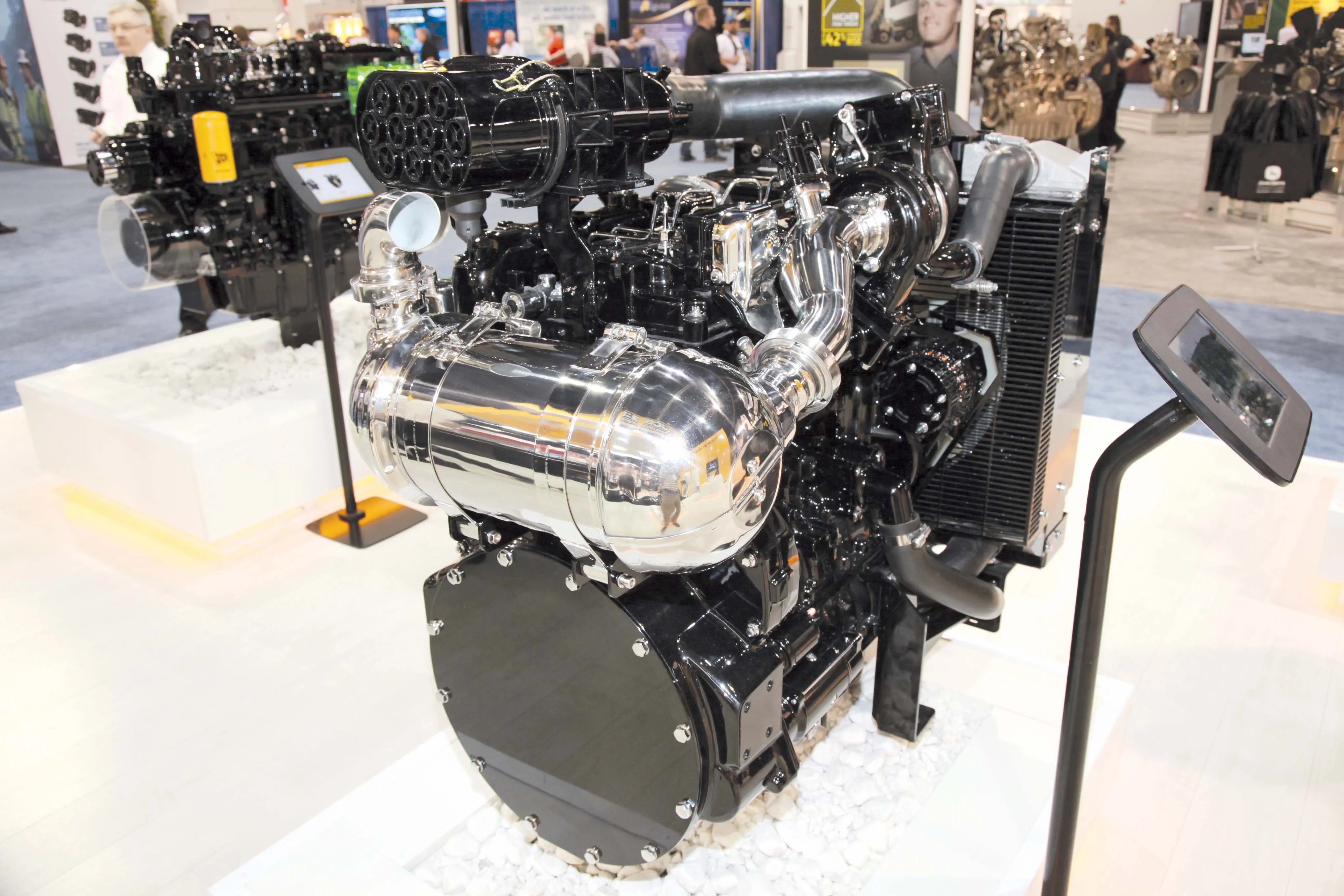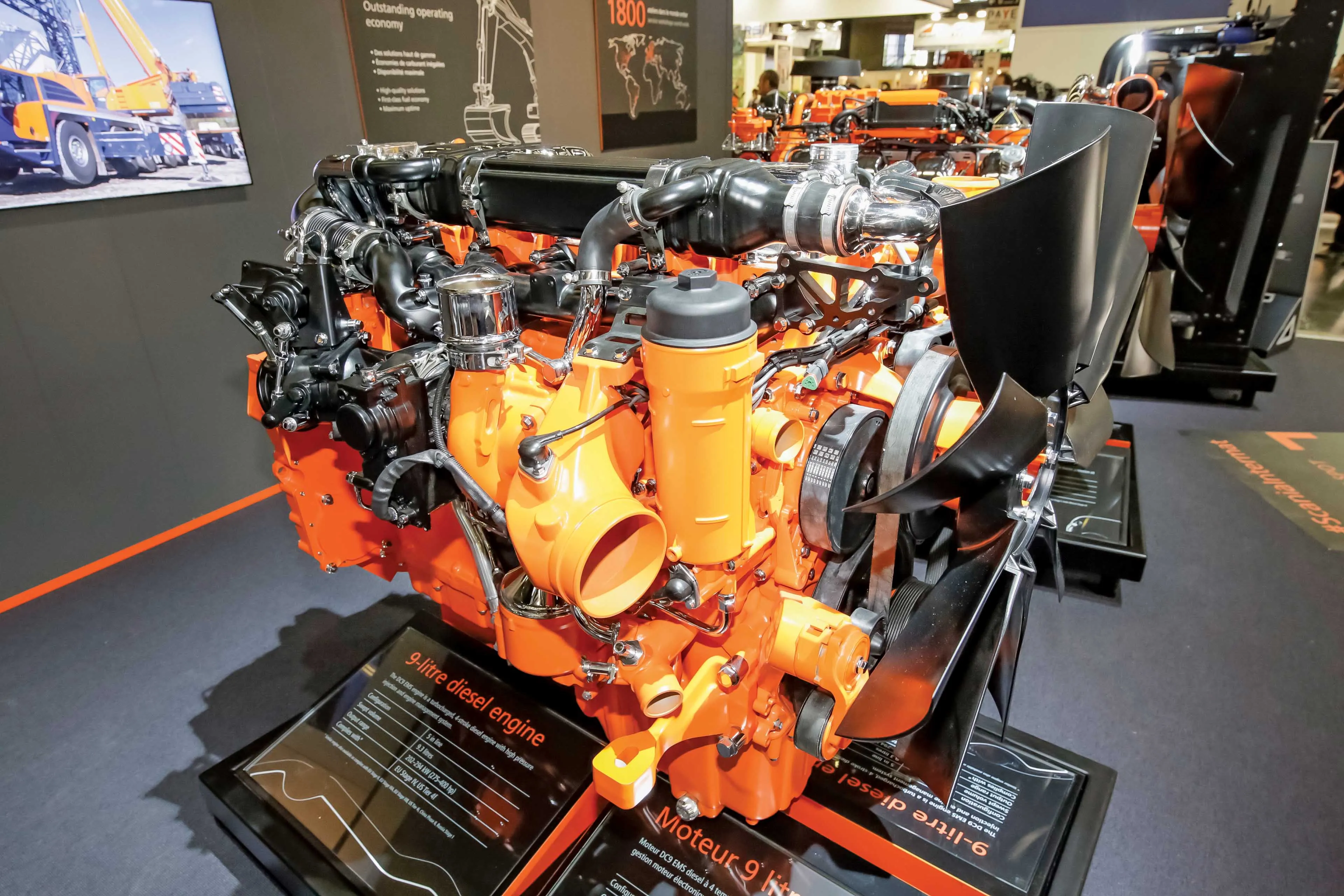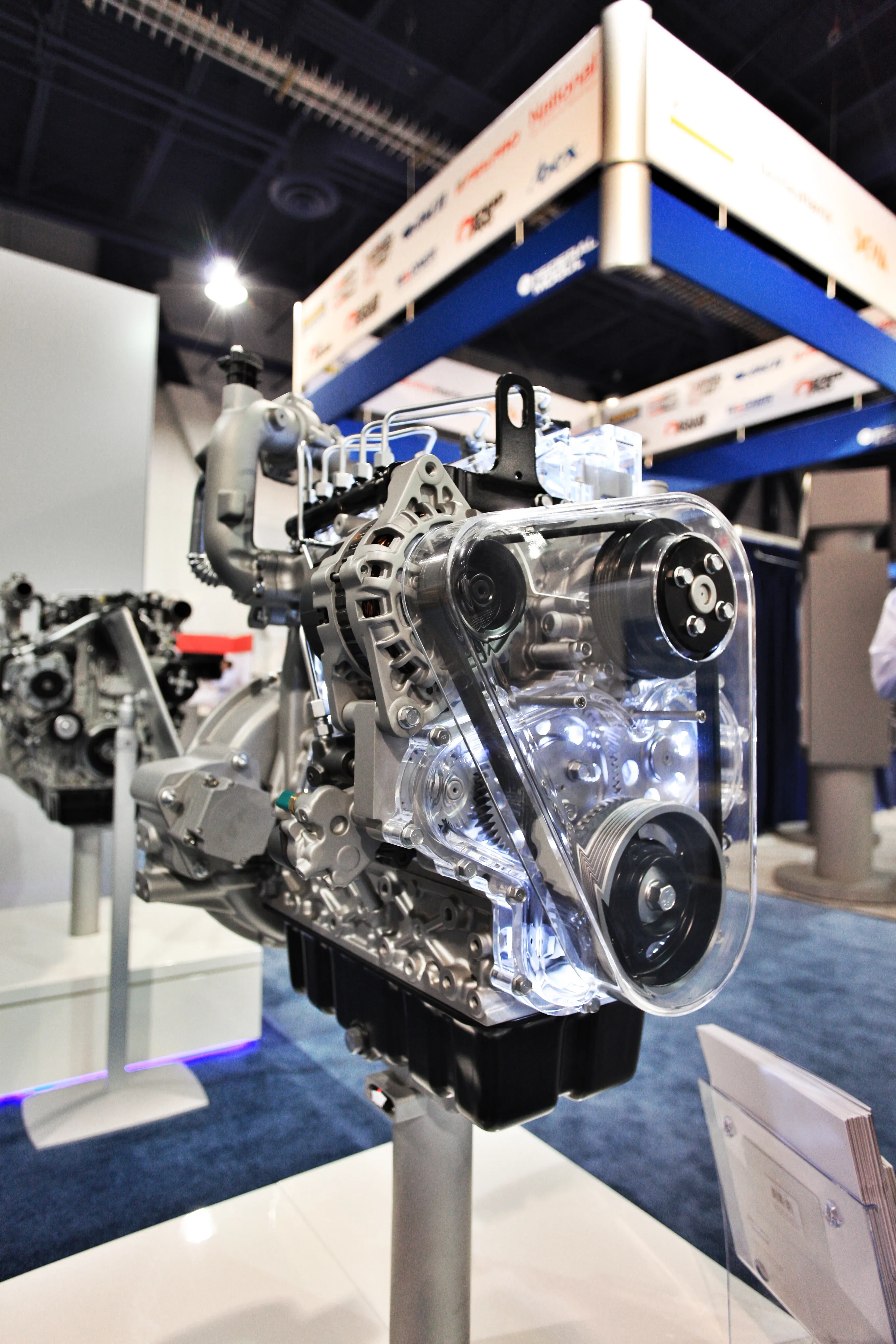A wide array of engine solutions was unveiled at Conexpo 2014, with major manufacturers developing new low emissions technologies
Cummins Emissions Solutions introduced a range of EcoFit urea tanks and lines for those adopting SCR after-treatment systems. EcoFit includes four tank capacities – 19, 38, 57 and 114litres – including two different shape profiles for additional installation flexibility. A key component is the urea quality sensor – it detects and monitors the correct urea liquid composition, e
May 20, 2014
Read time: 5 mins

A wide array of engine solutions was unveiled at Conexpo 2014, with major manufacturers developing new low emissions technologies
196 Cummins Emissions Solutions introduced a range of EcoFit urea tanks and lines for those adopting SCR after-treatment systems. EcoFit includes four tank capacities – 19, 38, 57 and 114litres – including two different shape profiles for additional installation flexibility. A key component is the urea quality sensor – it detects and monitors the correct urea liquid composition, enabling an SCR system to function at peak performance. The EcoFit range from Cummins Emissions Solutions offers customers the added convenience and integration benefits of a fully packaged after-treatment system.
From201 Deutz comes a dual SCR after-treatment system on its high output TCD engines to meet Tier 4 Final standards. Using a dual SCR system, the water-cooled 90° V6 12litre and V8 16litre engines, with power outputs from 390-520kW, were found not to require cooled EGR, DOC or DPF technologies. Compared to a similar engine using cooled EGR, Deutz said its TCD12 and TCD16 can operate with a cooling package that is around 20-25% smaller, improving installation packaging for OEMs.
Deutz’s SCR package uses a combined DOC/SCR catalyst as the first phase of exhaust treatment, followed by a catalyst. While slightly bulkier than a single SCR system, the dual SCR package uses one tank and two dosing systems but does not use twice as much fluid, said the company.
These latest TCD12 and TCD16 engines are said to offer up to 8% more performance with average fuel consumption reduced by around 5% compared to the previous Tier 4 Interim versions. However, expect DEF consumption to increase by 2%, said Deutz.
6902 Doosan Infracore’s engine business group has a new range of compact diesel engines that meet Tier 4 Final emissions legislation and avoid using a diesel particulate filter (DPF). Called the D18, D24 and D34, the three-model range spans an output range of 20-90kW and offers engine capacities of 1.8, 2.4 and 3.4litres. The non-DPF solution means the two smaller models need only a diesel oxidation catalyst (DOC), while the larger 3.4litre uses DOC with a selective catalytic reduction (SCR) after-treatment system.
The compact engine series uses electronic common rail injection, cooled EGR and an optimised piston bowl and combustion chamber. Engine characteristics include a recommended 500hour oil change interval, and Doosan said it expects the engine to offer a fuel consumption of around 2.5litres/hour – 0.4litres lower than the industry average.
FPT Industrial’s latest compact diesel engine is the R22 – a three-cylinder power unit that covers the 33-52kW sector. Based on one of the firm’s VM engine platforms, the R22 has adopted a single canister approach to achieving Tier 4 Final emissions legislation. As a result, it combines a diesel oxidation catalyst with a partial-flow filter and cooled exhaust gas recirculation, while it uses passive regeneration and needs no intervention from the operator.
255 JCB Power Systems says that its 4.4litre and 4.8litre Ecomax engines use highly efficient combustion technology to meet the required standards without the use of a diesel particulate filter (DPF). The engines have also been recalibrated for Tier 4 Final, resulting in a further 5% fuel saving compared to previous models. A compact selective catalytic reduction (SCR) solution with a urea-based additive will be used on engines above 55kW. The SCR catalyst is incorporated into a single, compact exhaust silencer. Meanwhile lower Tier variants are available for less regulated markets.
John Deere Power Systems (JDPS) now offers the new PowerSight telematics system. This comprises four257 John Deere technologies: the JDLink machine monitoring system; machine health prognostics; remote diagnostics and programming; and the PowerAssist app. All four elements integrate to help customers manage their John Deere-powered OEM equipment. There are four levels of monitoring, available on subscription, to suit customer choices – these include Locate, Express, Select or Ultimate packages.
A novel move from7648 MTU is a high-sulphur fuel capability for its industrial engines. The move enables OEM’s to adopt the latest MTU engine technology in countries where ultra-low sulphur diesel (ULSD) is not available. MTU’s is being offered on the Tier 4 Interim 900, 500 and 460 series engines. This will be followed by the company’s complete line up of Tier 4 Final certified engines in the 1000-1500 series in the future. The solution involves recalibration of the engine ECU to isolate the after-treatment system. Once disabled, the SCR catalyst does not need to be removed, said the company.
Volvo Penta now offers Tier 4 Final emissions-compliant engines from 106-523kW. The range comes in 5-, 8-, 11-, 13- and 16litre capacities. Achieving Tier 4 Final emissions sees783 Volvo Penta opting for selective catalytic reduction (SCR) technology. The system performs without regeneration or a diesel particulate filter making it a simpler, more versatile and a less costly option for customers, said the company. To meet Tier 4 Final Volvo Penta redesigned the selective catalytic reduction (SCR) technology already installed in its Tier 4 Interim engines.
7139 Yanmar’s industrial engines division used 3485 Conexpo to show off its latest compact diesel engine equipped with a diesel particulate filter (DPF). Offering a power rating of 53.7kW at 2500rpm, the 3.3litre 4TNV98CT combines common rail electronic injection and cooled exhaust gas recirculation with the DPF system. Yanmar said the DPF requires only minimum maintenance; regeneration is fully automatic and needs no intervention from the operator, while ash needs to be cleaned from the DPF as part of a periodic servicing regime that starts beyond 3,000hours and is monitored electronically.
From
Deutz’s SCR package uses a combined DOC/SCR catalyst as the first phase of exhaust treatment, followed by a catalyst. While slightly bulkier than a single SCR system, the dual SCR package uses one tank and two dosing systems but does not use twice as much fluid, said the company.
These latest TCD12 and TCD16 engines are said to offer up to 8% more performance with average fuel consumption reduced by around 5% compared to the previous Tier 4 Interim versions. However, expect DEF consumption to increase by 2%, said Deutz.
The compact engine series uses electronic common rail injection, cooled EGR and an optimised piston bowl and combustion chamber. Engine characteristics include a recommended 500hour oil change interval, and Doosan said it expects the engine to offer a fuel consumption of around 2.5litres/hour – 0.4litres lower than the industry average.
FPT Industrial’s latest compact diesel engine is the R22 – a three-cylinder power unit that covers the 33-52kW sector. Based on one of the firm’s VM engine platforms, the R22 has adopted a single canister approach to achieving Tier 4 Final emissions legislation. As a result, it combines a diesel oxidation catalyst with a partial-flow filter and cooled exhaust gas recirculation, while it uses passive regeneration and needs no intervention from the operator.
John Deere Power Systems (JDPS) now offers the new PowerSight telematics system. This comprises four
A novel move from
Volvo Penta now offers Tier 4 Final emissions-compliant engines from 106-523kW. The range comes in 5-, 8-, 11-, 13- and 16litre capacities. Achieving Tier 4 Final emissions sees









